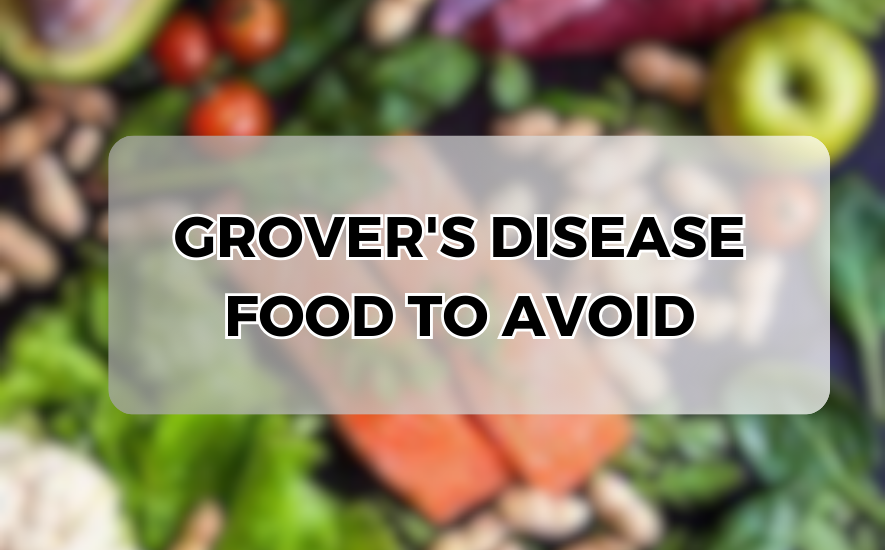Introduction
Grover’s Disease, also known as Transient Acantholytic Dermatosis (TAD), is a relatively uncommon skin condition characterized by red, itchy bumps that typically appear on the chest and back. While the exact cause of Grover’s Disease remains unknown, certain triggers, including dietary factors, can exacerbate symptoms or prolong the duration of the condition. In this article, we will explore the foods to avoid for individuals dealing with Grover’s Disease.
Understanding Grover’s Disease
Before delving into dietary recommendations, it’s crucial to understand the nature of Grover’s Disease. This condition primarily affects middle-aged and older adults, though it can occur at any age. Symptoms often include intense itching and the formation of small, raised bumps on the skin, particularly in areas prone to sweating.
While Grover’s Disease typically resolves on its own within weeks to months, certain factors, including diet, can influence its severity and duration. By identifying and avoiding trigger foods, individuals may be able to alleviate discomfort and expedite the healing process.
Foods to Avoid
1. Spicy Foods: Spicy foods, such as chili peppers, hot sauces, and spicy curries, can exacerbate inflammation and itching associated with Grover’s Disease. These foods contain capsaicin, a compound known to trigger skin reactions and worsen existing skin conditions.
2. Citrus Fruits: Citrus fruits like oranges, lemons, and grapefruits are acidic in nature, which can irritate sensitive skin and aggravate Grover’s Disease symptoms. Avoiding citrus fruits and their juices may help reduce inflammation and itching.
3. Tomatoes and Tomato-based Products: Tomatoes are rich in histamines and other compounds that can promote allergic reactions and skin irritation. Individuals with Grover’s Disease may benefit from limiting their consumption of tomatoes and tomato-based products, such as sauces and soups.
4. Alcohol: Alcohol consumption can contribute to dehydration and may exacerbate skin conditions like Grover’s Disease. Additionally, certain alcoholic beverages, such as red wine and beer, contain histamines and sulfites that can trigger allergic reactions and worsen itching and inflammation.
5. Processed Foods: Processed foods, including fast food, packaged snacks, and frozen meals, often contain high levels of preservatives, additives, and artificial ingredients. These additives can disrupt immune function and exacerbate inflammation, potentially worsening Grover’s Disease symptoms.
6. Dairy Products: Dairy products, particularly full-fat varieties, have been associated with increased inflammation in some individuals. While research on the relationship between dairy consumption and Grover’s Disease is limited, avoiding or reducing dairy intake may be beneficial for those experiencing symptoms.
Conclusion
While dietary changes alone may not cure Grover’s Disease, they can play a significant role in managing symptoms and improving overall well-being. By avoiding trigger foods and focusing on a balanced diet rich in fruits, vegetables, lean proteins, and whole grains, individuals with Grover’s Disease can support their body’s natural healing process and minimize discomfort.




